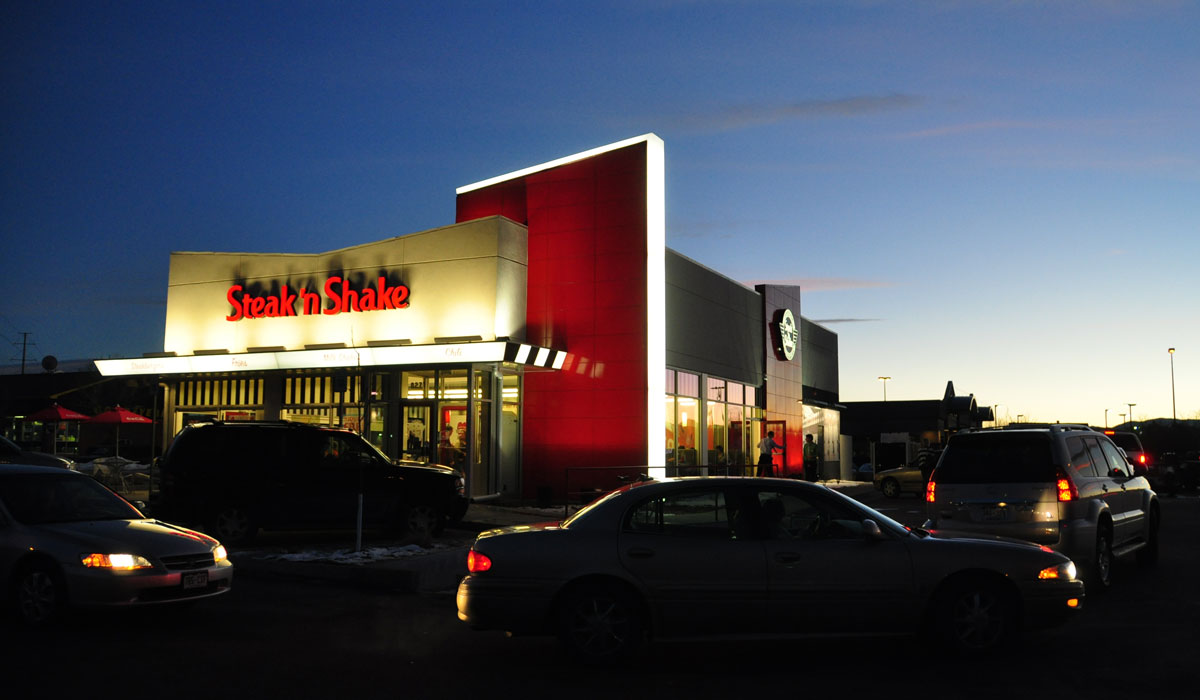Steak ‘n Shake’s two-pronged transformation remains an uphill trek. The company reported Q3 revenue of $57 million, a 27 percent decline from $78.3 million in the year-ago period. The company credited much of the slide to its continued effort to shift company restaurants to “franchise-partner” locations.
It’s a multi-year effort that began in fall 2018, where company stores are sold to single-unit operators for $10,000. The brand then assesses a fee of up to 15 percent of sales as well as 50 percent of profits.
At these stores, however, Steak ‘n Shake only records its portion of restaurant profits and certain fees as revenue. “We are therefore fully affected by the operating results of the business, unlike in a traditional franchising arrangement, where the franchisor obtains a royalty fee based on sales only,” the company noted in filings.
READ MORE: The Steak ‘n Shake of Old is Gone
After the initial franchise fee of $10,000, recognized when the operator becomes a partner, the company reports franchise partner fees monthly as underlying restaurant sales occur.
The brand had 221 corporate stores as of September 30. There were 276 at the end of last year. In addition, 42 of those company-operated venues were “temporarily closed” as of September 30.
The franchise-partner tally is up to 140 from 86 at year’s close.

So as the company suggested, revenue is going to continue to fall as restaurants transition from corporate to franchise-partner locations. On display—franchise-partner fees were $11.5 million in Q3 compared to $6.9 million last year.
The other evolution taking shape is Steak ‘n Shake’s conversion to a counter-service model. The brand spent $29.8 million in CapEx making the flip over the first nine months of the year, per filings.
A full-service brand for its first 78 years, the company took on the transformation to address speed and labor concerns. Guests now initiate transactions at a kiosk.
Pre-COVID, labor costs ran at 38.5 percent of net sales for Steak ‘n Shake—a number that placed it at a 6–8 percentage point disadvantage compared with category peers.
Last year, it said the counter-service switch brought labor to about 29 percent of net sales, albeit at a lower sales volume. CEO Sardar Biglari explained it as, “The dining room with table service was undoubtedly a revenue center, but it was not a profit center.”
He added COVID “hastened the inventible,” as stores shut down and took the pause to rework operations. Off-premises sales at comparable stores rose 14.3 percent in 2020.
It isn’t a cheap path, though. The capital outlay per unit ranges between $100,000–$200,000 to remodel the interior of the restaurant, introduce a new point-of-sale system, and install the self-order kiosks.
Steak ‘n Shake also noted in its Q3 report it expects to increase menu prices this coming quarter to improve margins.
Net sales for the Q3 and the first nine months of 2021 were $41,916 and $146,269, respectively, representing a decrease of $25,701 or 38 percent, and $95,563 or 39.5 percent, year-over-year, respectively. Again, the company noted the “decrease in revenue of company-operated restaurants is primarily due to the shift of company units to franchise partner units.”
Parent company Biglari Holdings lost $10.7 million in the quarter versus earnings of $21.1 million in Q3 last year. Its investment partnerships, or “Lion Funds,” lost $20.2 million in the period after gaining $27.6 million in the comparable run.
The restaurant arm swung a $1.5 million loss after shedding $15,000 last year. Western Sizzlin exited Q3 with three company and 38 franchise units.













